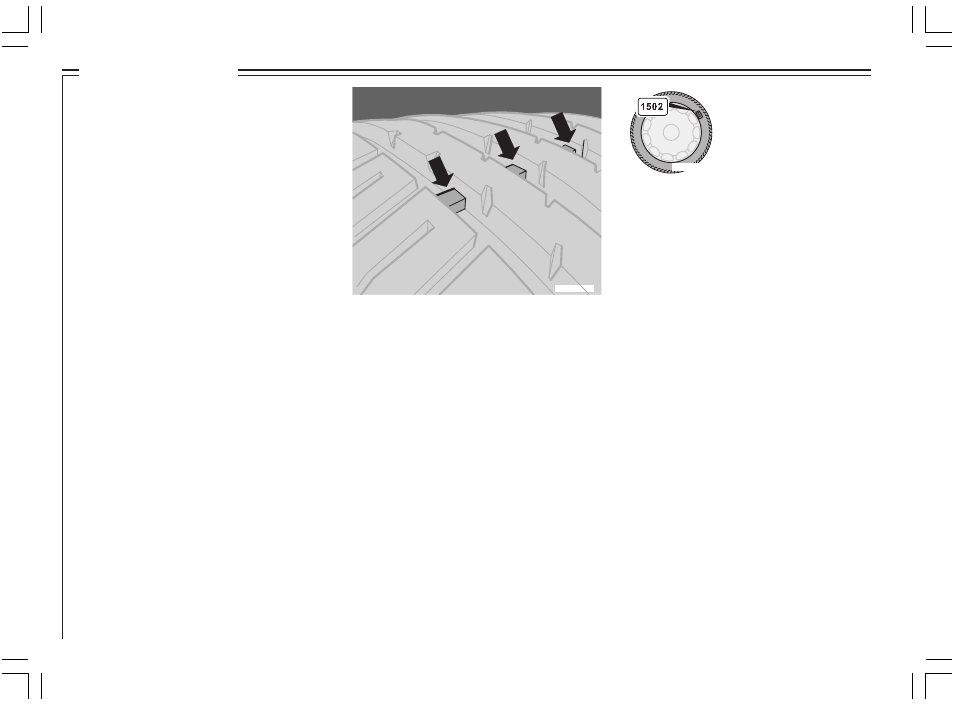Wheels and tires – Volvo 2005 C70 User Manual
Page 86

80
General information
Your vehicle is equipped with tires according
to the vehicles tire information placard(s) on
the rear edge of the drivers door (U.S.
models), or on the rear edge of the passenger's
door (Canadian models).
The tires have good road holding character-
istics and offer good handling on dry and wet
surfaces. It should be noted however that the
tires have been developed to give these
features on snow/ice-free surfaces.
Certain models are equipped with all-season
tires, which provide a somewhat higher degree
of road holding on slippery surfaces than tires
without the all-season rating. However, for
optimum road holding on icy or snow-covered
roads, we recommend suitable winter tires on
all four wheels.
When replacing tires, be sure that the new tires
are the same size designation, type (radial) and
preferably from the same manufacturer, on all
four wheels. Otherwise there is a risk of
altering the cars roadholding and handling
characteristics.
NOTE: When storing wheel/tire assemblies
(e.g. winter tires and wheels), either stand the
assemblies upright, or suspend them off the
ground. Laying wheel/tire assemblies on their
sides for prolonged periods can cause wheel
and/or tire damage.
Wheels and tires
Tread wear indicator
The tires have wear indicator strips running
across or parallel to the tread. The letters TWI
are printed on the side of the tire. When
approximately 1/16" (1.6 mm) is left on the
tread, these strips become visible and indicate
that the tire should be replaced. Tires with less
than 1/16" (1.6 mm) tread offer very poor
traction.
When replacing worn tires, it is recommended
that the tire be identical in type (radial) and
size as the one being replaced. Using a tire of
the same make (manufacturer) will prevent
alteration of the driving characteristics of the
vehicle.
IMG-201460
New tires
Remember that tires are
perishable goods. As of
2000, the manufacturing
week and year will be
indicated with 4 digits (e.g.
1502 means that the tire illustrated was
manufactured during week 15 of 2002).
Improving tire economy:
Maintain correct tire pressure. See the tire
pressure table on page 83.
Drive smoothly: avoid fast starts, hard
braking and tire screeching.
Tire wear increases with speed.
Correct front wheel alignment is very
important.
Unbalanced wheels impair tire economy
and driving comfort.
Tires must maintain the same direction of
rotation throughout their lifetime.
When replacing tires, the tires with the most
tread should be mounted on the rear wheels
to reduce the chance of oversteer during
hard braking.
Hitting curbs or potholes can damage the
tires and/or wheels permanently.
IMG-201620